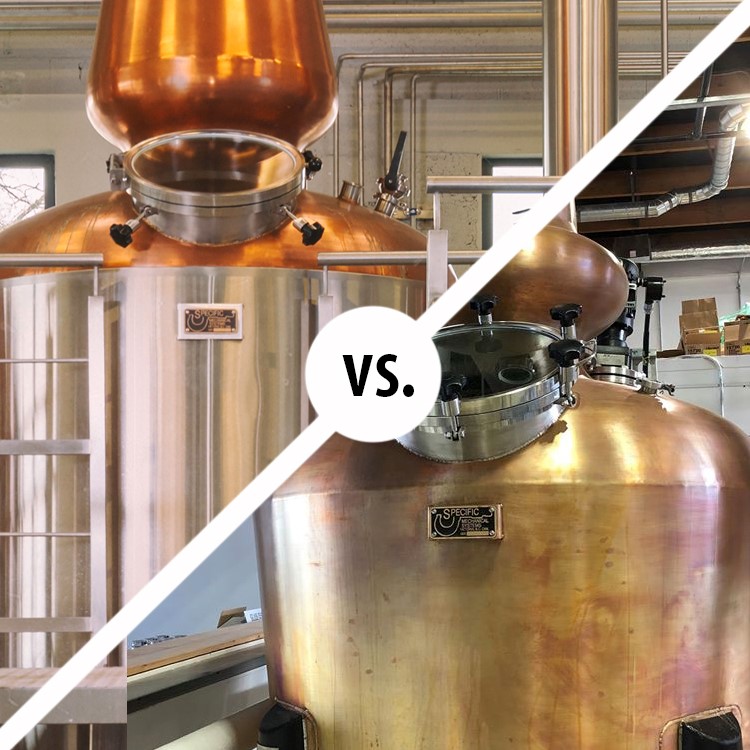No, it’s not necessary to have an all copper pot still to produce quality distilled spirits. While copper pot stills have been traditionally favoured for their unique characteristics and benefits, other materials such as stainless steel can also be used effectively in distillation.
Copper pot stills are valued for several reasons:
Catalytic Properties: Copper is a catalyst for chemical reactions that remove sulfur compounds and undesirable flavours from the distillate. This helps produce a smoother, cleaner spirit.
Heat Conductivity: Copper is an excellent conductor of heat. It distributes heat more evenly across the surface of the still, reducing the risk of scorching or burning the mash or wash.
Aesthetic Traditions: Copper pot stills are often associated with tradition and craftsmanship. They are visually appealing and can add a certain charm to the distillery.
Aging Potential: Some believe that spirits distilled in copper pot stills have characteristics that make them more conducive to aging and developing complex flavours over time.
However, stainless steel pot stills also have their advantages:
Durability: Stainless steel is highly durable and resistant to corrosion, making it easier to clean and maintain than copper.
Heat Retention: While copper is an excellent conductor of heat, stainless steel retains heat well, which can be useful in maintaining a consistent temperature during distillation.
Consistency: Stainless steel has a neutral reaction with the distillate, allowing for a more precise control of flavours without the influence of copper’s catalytic properties.
Lower Cost: Stainless steel pot stills are often more cost-effective than their copper counterparts.
In practice, the choice between copper and stainless steel pot stills depends on the distiller’s goals and preferences. Some distillers may prefer the traditional and aesthetic aspects of copper, while others prioritize the functional advantages of stainless steel. Many distilleries also use a combination of both materials, utilizing copper for the still’s critical parts that come into direct contact with the vapor and stainless steel for structural components.
Ultimately, the quality of the final product depends on various factors including the distiller’s skills, the quality of the ingredients, the design of the still, and the techniques employed. Whether copper or stainless steel, what’s most important is understanding the characteristics of the chosen material and tailoring the distillation process to achieve the desired results.






